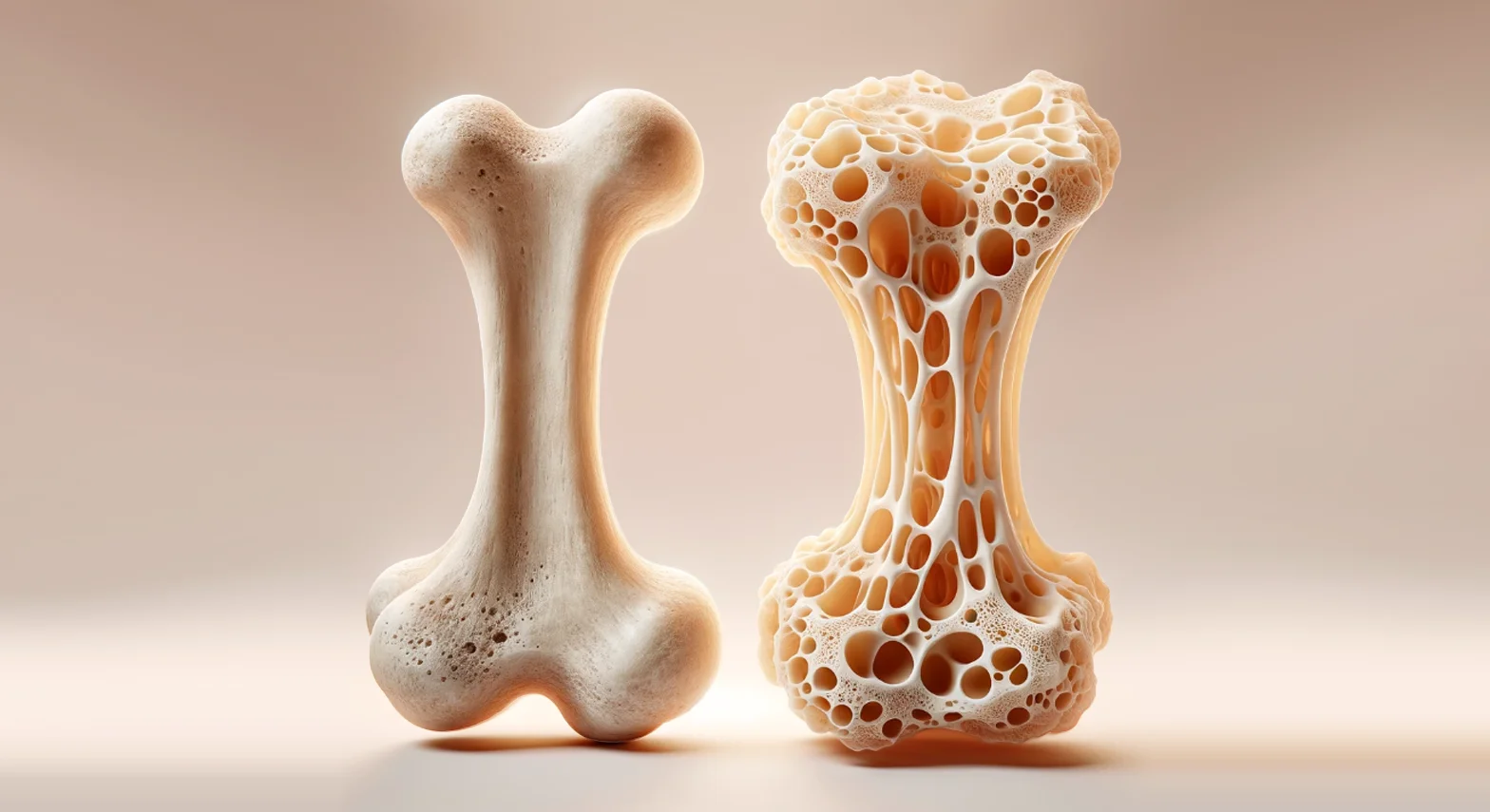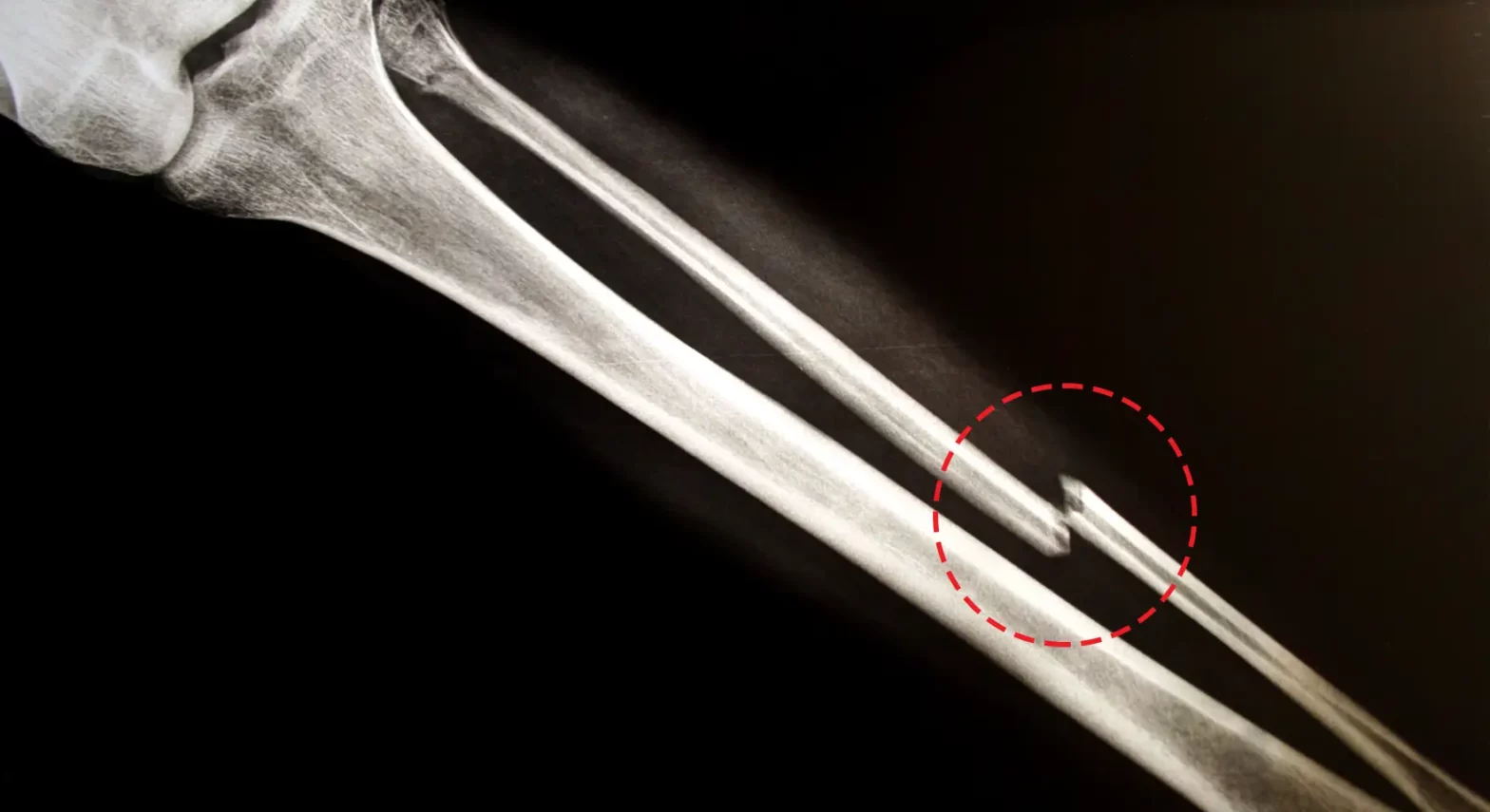December 20th, 2023
How to Maintain Bone Density (preventing Osteoporosis)

The human body has over 200 bones[1] and as we age, the property of these bones changes[2]. Bones do not remain constant; rather, they alter and remodel over the course of our lives[2]. As we age, bones get a little more brittle. They also become porous and the calcium stores within, begin to decline[2]. All of this leads to a natural weakening of the bone and for some individuals, osteoporosis may arise. Osteoporosis is a disease of the bones that occurs when the mass and density of the bones begins to decrease[3]. Unfortunately, this weakness of the bone also increases the risk of a fracture occurring.
It is estimated that approximately 10 million Americans over the age of fifty have osteoporosis[4]. Most of those affected are women, but about 2 million are men[4]. Additionally, over 43 million more Americans are thought to have low bone mass which itself leaves people with an increased risk of developing osteoporosis[4].
Expert Insights
Osteoporosis and Hip Fractures - Bradford S. Waddell, MD
Building Your Bone Health
Bones form the framework of our bodies and strong, healthy bones are vital to our overall health and well-being. Although it’s easy to think about osteoporosis as just a disease of the elderly, this is incorrect. Good bone health begins at a young age. Most of us will reach our peak bone mass between the ages of 25 and 30[5]. Past this stage, our bone mass density does not dramatically increase[6]. Essentially, by the time we reach mid-adulthood, our bone strength has all but peaked and plateaued. Beyond this point, bone density will only increase 1-2 %[6]. That’s it. And even this slight increase in density only occurs in the background of maintaining an exercise regime[6]. So even in our thirties and forties, it’s advisable to start keeping our bone health in mind.
The promising part of this anecdote is that even though we might not be building more dense bone, we can certainly try to maintain what we have or at the very least, limit the rate of decline.
Thankfully, there are steps we can all take to maintain strong, healthy bones as we age. Doing so will enhance our overall health while also reducing the risk of developing osteoporosis in later life. These steps don’t involve a silver bullet or a quick fix. Fortunately (or unfortunately), they’re also not ground-breaking new ideas either. They include actions we already know about. The best way to keep your bones healthy at any age is by following a healthy lifestyle that incorporates routine exercise and good food choices into our day to day lives. It also means giving up some habits such as drinking or smoking.
Staying Physically Active
Movement, in any form, is one of the best ways to keep osteoporosis at bay. Daily physical activity such as walking, jogging or swimming, play an important role in maintaining bone strength. Research has shown that weight-bearing exercises and resistance training are the best ways to improve bone mineral density[7]. Weight bearing exercises are activities where the bones and muscles are forced to work against gravity. These activities involve movement of the lower body where the legs are forced to lift or pull against gravity. Examples of weight bearing activities are brisk walking, hiking, tennis, badminton, pickleball, dancing and stair climbing. Exercise also has the benefit of decreasing falls risk by improving muscle tone, balance, and coordination[7].
Smoking
A number of risk factors increase the chances of developing osteoporosis but smoking is particularly crucial because there is a direct correlation between cigarette smoking and low bone mass[8]. Tobacco smoking causes an imbalance in bone turnover, leading to lower bone mass which leaves bone vulnerable to osteoporosis and fractures[8]. Those who smoke should attempt to quit smoking as soon as possible. Help is always available and can be sought from medical practitioners and pharmacists.
Essential Nutrients That Promote Bone Health
One of the primary determinants of bone health is nutrition. Many of the nutritional needs for bone health such as Calcium and Vitamin D can be met with healthy food choices in our normal diet. Apart from these, other minerals and elements that play a key role in bone health and repair include Magnesium, Silicon and Boron[9]. As with Calcium and Vitamin D, these are usually present in our diet. However, in cases where these nutrients aren’t able to be obtained from diet alone, then supplements can be considered.
Alcohol Consumption
Heavy alcohol consumption is a health risk for many reasons and bone health is no different. As mentioned, calcium is an essential nutrient for healthy bones and excessive alcohol intake can be detrimental to calcium stores in the body[10]. Consuming too much alcohol can impair the stomach from absorbing calcium into the bloodstream. Additionally, excessive amounts of alcohol can affect the liver which plays a crucial role in activating Vitamin D. It is for these reasons that alcohol consumption and good bone health do not go hand in hand.
Weight
When it comes to osteoporosis, weight also matters. Whether it’s being overweight or underweight, both states can have a negative impact on bone health. Low body weight at any age is associated with a greater risk of bone problems and fractures[6] whereas obesity (BMI >30) can impact bone metabolism[11]. Therefore it’s advisable to try to maintain a steady, healthy weight through all stages of life. This does not have to be achieved exclusively through diet. It’s best to get to a moderate weight by using a combination of healthy eating and exercise.
Osteoporosis is not inevitable Although it disproportionately affects the elderly, there are steps we can all take to reduce our risk of developing this condition and the earlier we start, the better. Reducing this risk is centered around healthy lifestyle choices but it also means knowing that we’re never too young to start focusing on the health and wellness of our bones.
Find an Orthopedic Doctor in Your Area





